Abstract
The effect of solar radiation on a natural bacterial population from the Chesapeake Bay was evaluated from measured changes in numbers of organisms engaged in amino acid uptake. From July through May, freshly collected water samples were exposed in quartz containers to 3.5 h of total sunlight both with and without UV-absorbing filters. Water samples were subsequently incubated with tritiated amino acids, and the uptake-active bacteria were assayed by microauto-radiography-epifluorescence microscopy. The survival index, defined as the fraction of the uptake-active population that remained active after the exposure to sunlight, ranged from 0.93 to 0.20. Decreased survival was correlated with increased solar intensity. The inhibition of amino acid uptake was attributed not only to the UV-B component of the solar spectrum (280 to 320 nm), but also to longer UV and visible wavelengths.
Full text
PDF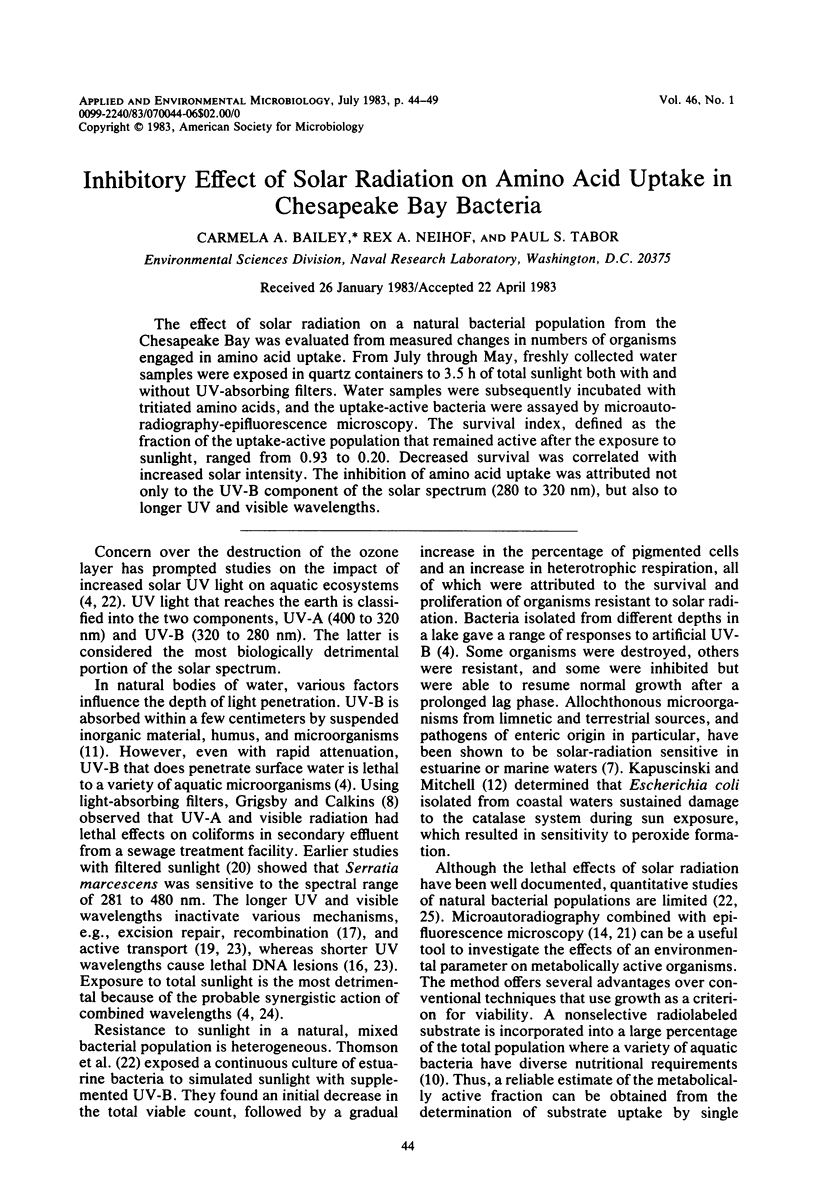
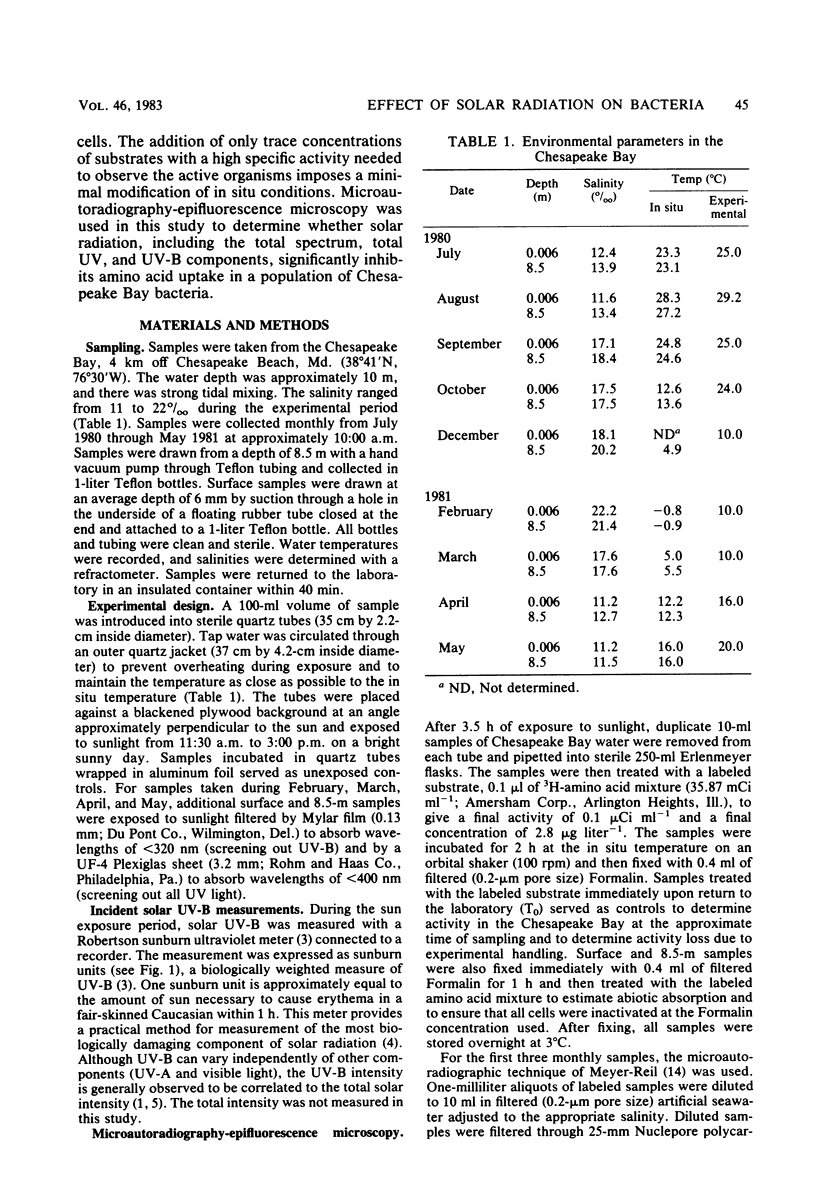
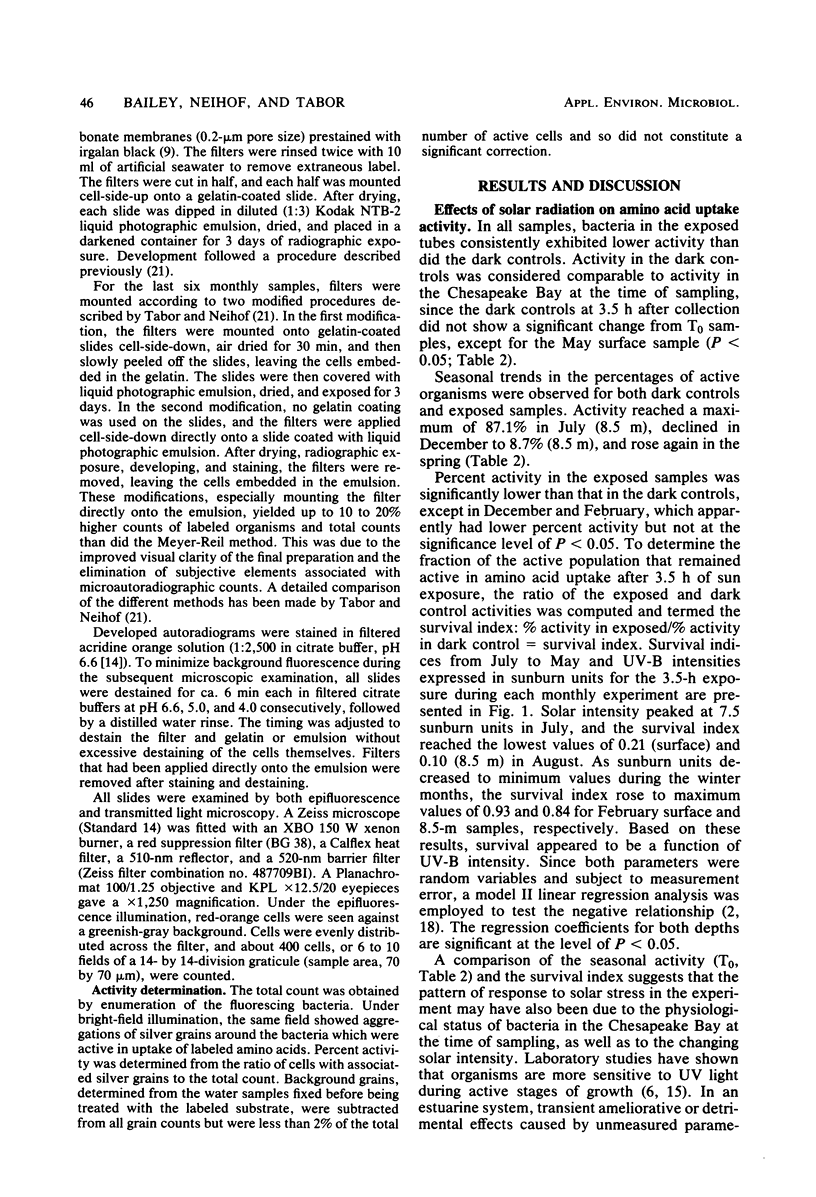
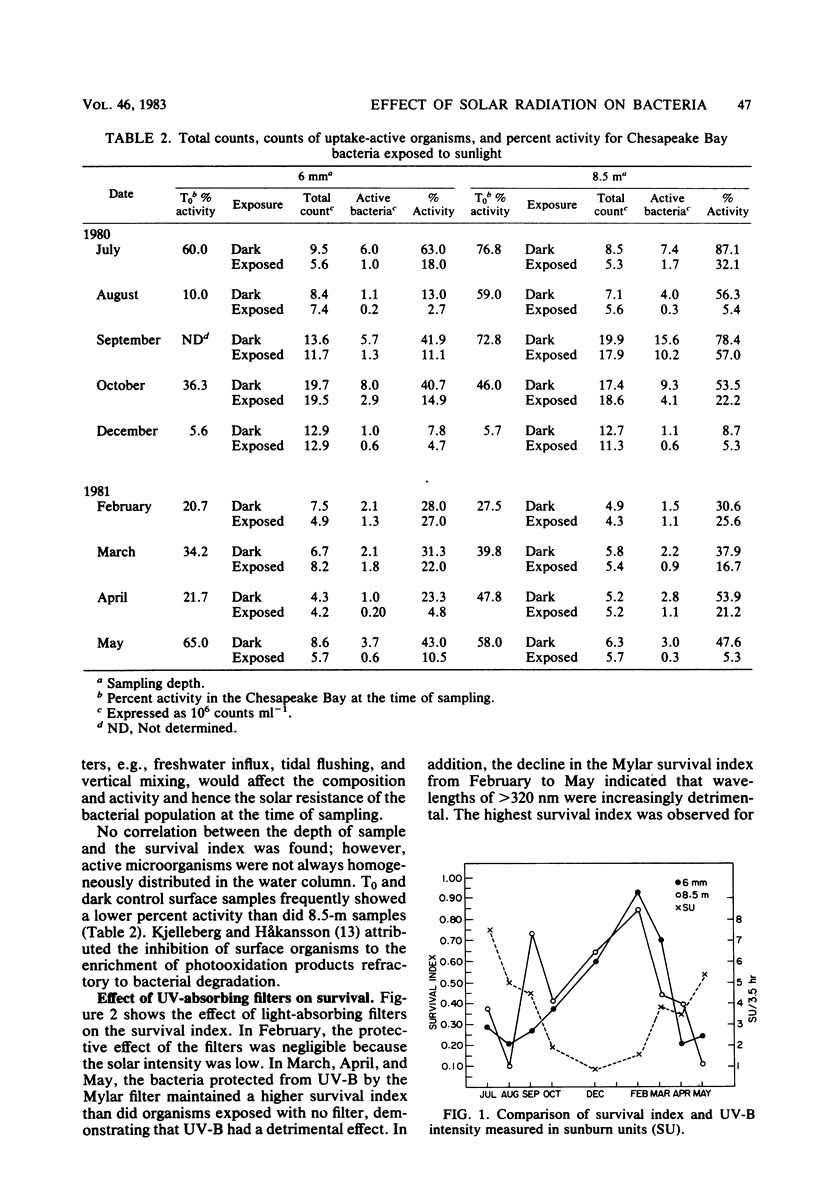
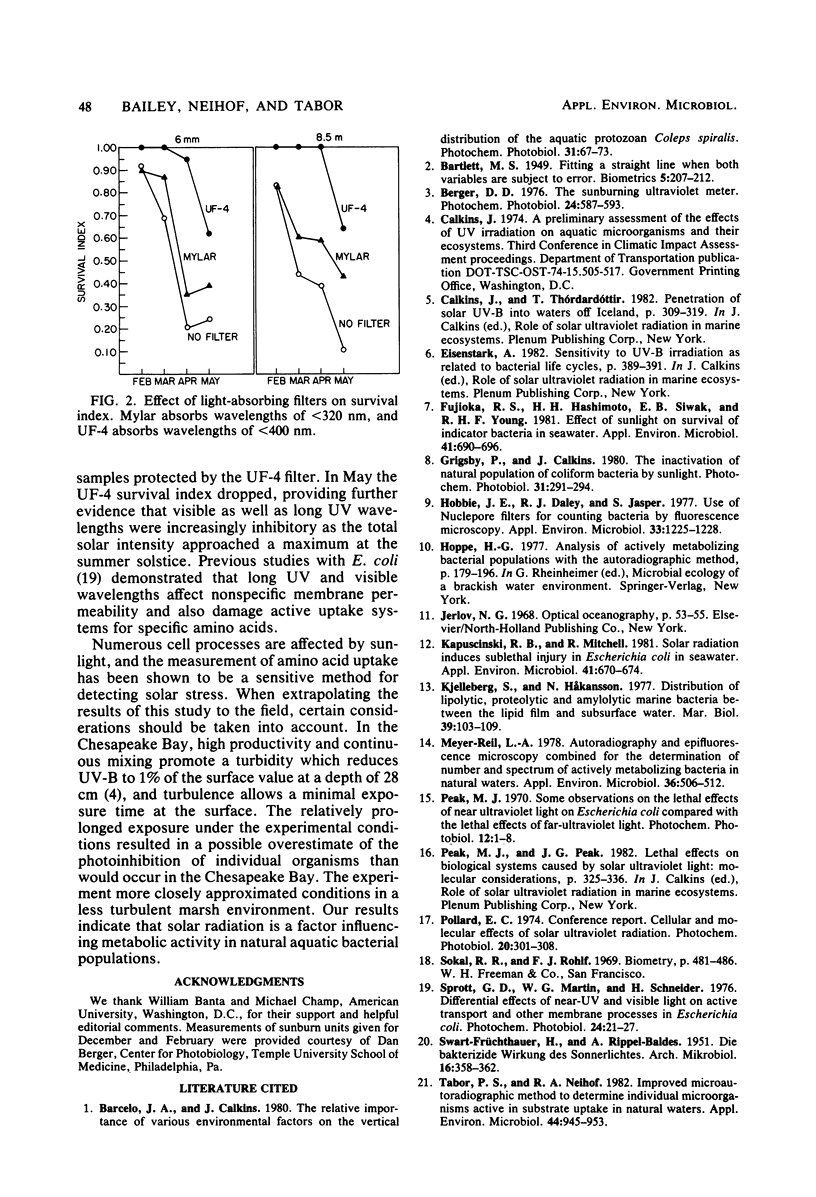
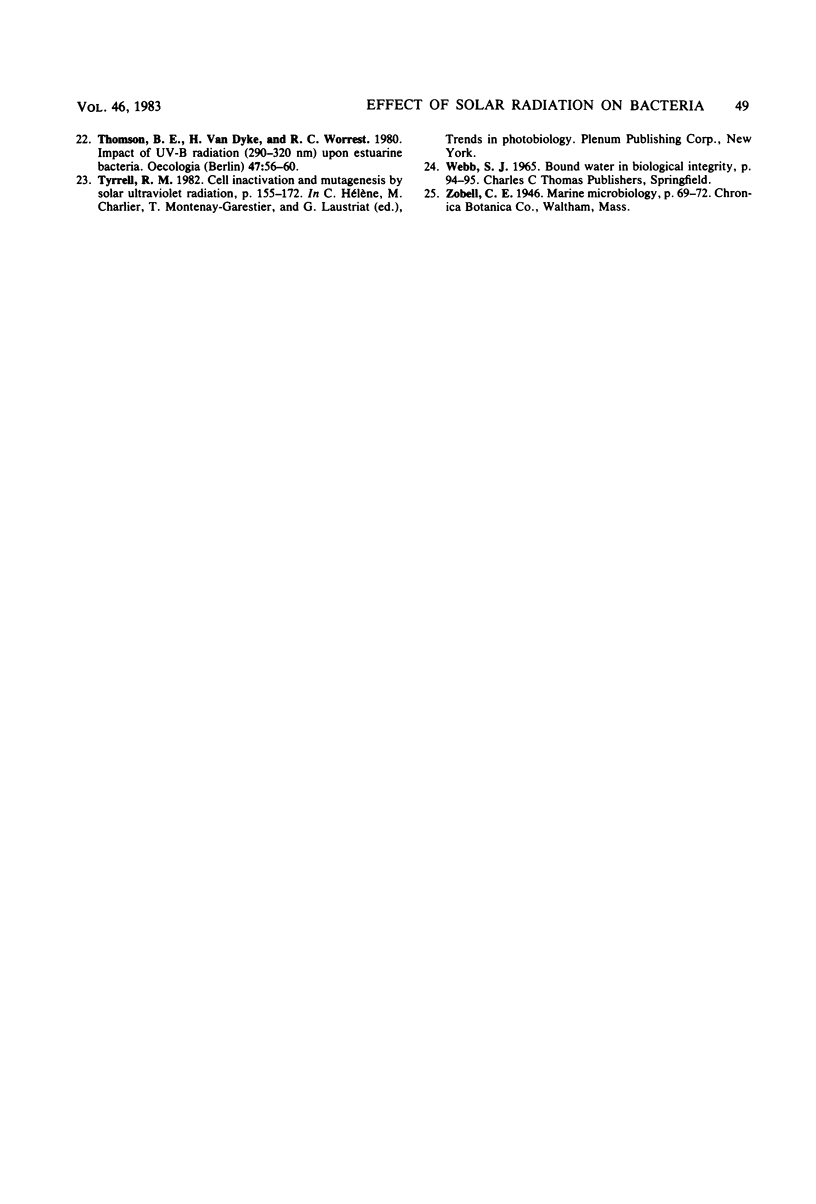
Selected References
These references are in PubMed. This may not be the complete list of references from this article.
- Berger D. S. The sunburning ultraviolet meter: design and performance. Photochem Photobiol. 1976 Dec;24(6):587–593. doi: 10.1111/j.1751-1097.1976.tb06877.x. [DOI] [PubMed] [Google Scholar]
- Fujioka R. S., Hashimoto H. H., Siwak E. B., Young R. H. Effect of sunlight on survival of indicator bacteria in seawater. Appl Environ Microbiol. 1981 Mar;41(3):690–696. doi: 10.1128/aem.41.3.690-696.1981. [DOI] [PMC free article] [PubMed] [Google Scholar]
- Hobbie J. E., Daley R. J., Jasper S. Use of nuclepore filters for counting bacteria by fluorescence microscopy. Appl Environ Microbiol. 1977 May;33(5):1225–1228. doi: 10.1128/aem.33.5.1225-1228.1977. [DOI] [PMC free article] [PubMed] [Google Scholar]
- Kapuscinski R. B., Mitchell R. Solar radiation induces sublethal injury in Escherichia coli in seawater. Appl Environ Microbiol. 1981 Mar;41(3):670–674. doi: 10.1128/aem.41.3.670-674.1981. [DOI] [PMC free article] [PubMed] [Google Scholar]
- Meyer-Reil L. A. Autoradiography and epifluorescence microscopy combined for the determination of number and spectrum of actively metabolizing bacteria in natural water. Appl Environ Microbiol. 1978 Sep;36(3):506–512. doi: 10.1128/aem.36.3.506-512.1978. [DOI] [PMC free article] [PubMed] [Google Scholar]
- Peak M. J. Some observations on the lethal effects of near-ultraviolet light on Escherichia coli, compared with the lethal effects of far-ultraviolet light. Photochem Photobiol. 1970 Jul;12(1):1–8. doi: 10.1111/j.1751-1097.1970.tb06031.x. [DOI] [PubMed] [Google Scholar]
- Sprott G. D., Martin W. G., Schneider H. Differential effects of near-UV and visible light on active transport and other membrane processes in Escherichia coli. Photochem Photobiol. 1976 Jul;24(1):21–27. doi: 10.1111/j.1751-1097.1976.tb06793.x. [DOI] [PubMed] [Google Scholar]
- Tabor P. S., Neihof R. A. Improved microautoradiographic method to determine individual microorganisms active in substrate uptake in natural waters. Appl Environ Microbiol. 1982 Oct;44(4):945–953. doi: 10.1128/aem.44.4.945-953.1982. [DOI] [PMC free article] [PubMed] [Google Scholar]


